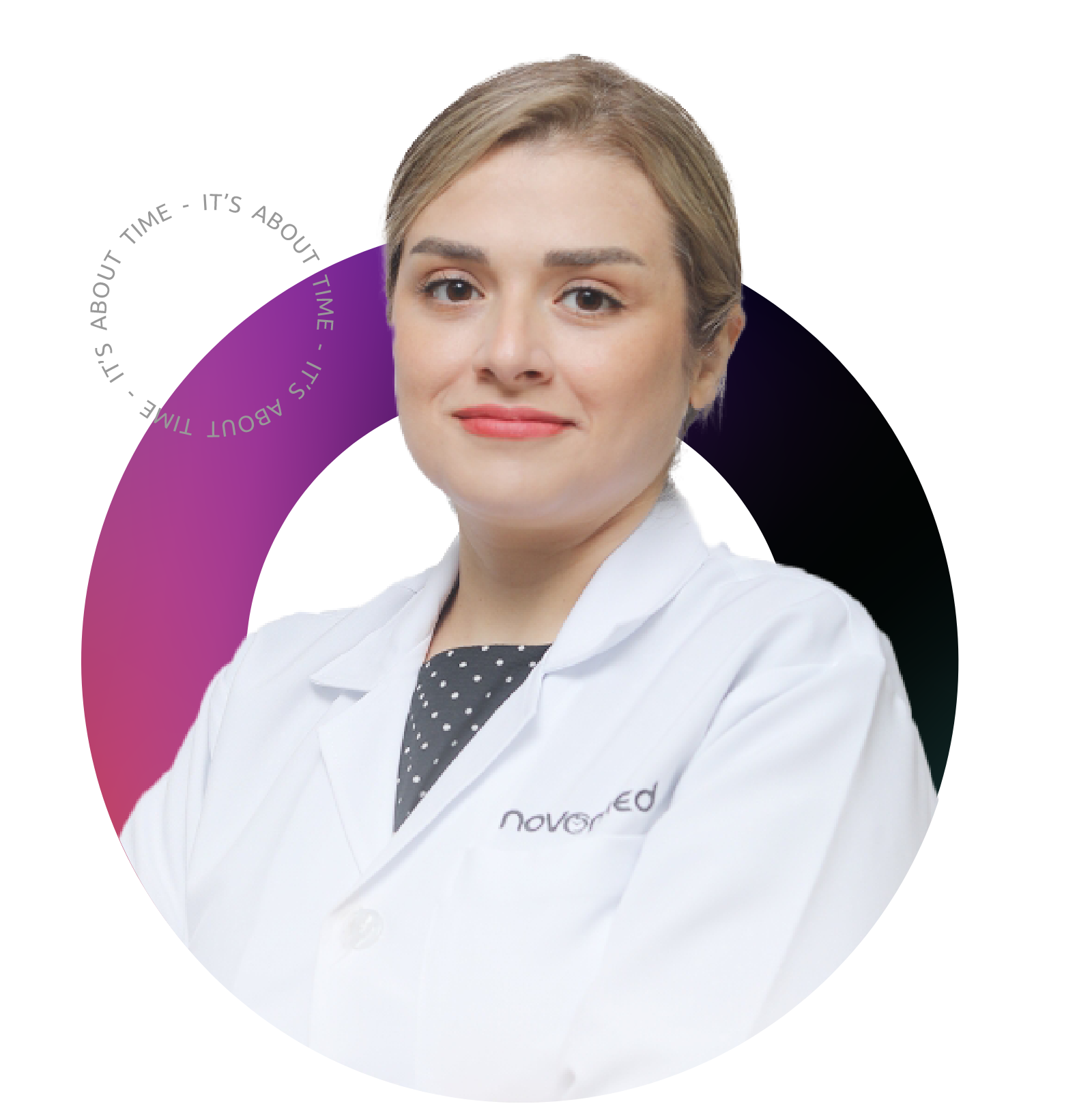Menorrhagia is the medical term for menstrual periods characterized by abnormally heavy or persistent bleeding. Although severe menstrual bleeding is a common concern, most women do not experience blood loss enough to be defined as menorrhagia.
With menorrhagia, you cannot continue your normal activities when you have your period due to blood loss and cramps. Talk to your doctor if you are concerned about the symptoms of your menstrual cycle, such as severe menstrual bleeding. There are many effective treatments for menorrhagia.
Causes
In some cases, the cause of menstrual bleeding is not known, but several conditions may cause menstruation. Common conditions include:
Hormonal imbalance in a normal menstrual cycle, the balance between estrogen and progesterone controls the formation of the endometrium, which is shed during menstruation. If hormone imbalances occur, the endometrium develops in excess and gradually sheds in the form of heavy menstrual bleeding.
Several conditions can cause hormonal imbalance, including PCOS, obesity, insulin resistance, and thyroid problems.
- Defect in the ovaries. If the ovaries do not release eggs during the menstrual cycle (anovulation), the body does not release progesterone as it does during the normal menstrual cycle. This leads to hormone imbalance, which may lead to menorrhagia.
- Uterine fibroids. These non-cancerous (benign) tumors appear in the uterus during the childbearing years. Fibroids in the uterus can cause heavier or more prolonged menstrual bleeding than usual.
- The small benign growths on the lining of the uterus can cause heavy or prolonged menstrual bleeding.
- Adenomyosis. This condition occurs when the glands from the endometrium fuse with the uterine muscles, often causing profuse bleeding and painful menstruation.
- Heavy menstrual bleeding is one of the known side effects of using a non-hormonal IUD for birth control. Your doctor will help you choose alternative birth control options.
- Complications of pregnancy. Miscarriage can cause a single, heavy, late period. Another cause of heavy bleeding during pregnancy includes an unusual location of the placenta, such as a low-lying placenta or placenta previa.
- Uterine cancer and cervical cancer can cause heavy menstrual bleeding, especially if you are postmenopausal or previously had an abnormal Pap test.
- Inherited bleeding disorders. Bleeding disorders – such as von Willebrand disease, a condition in which the deficiency or impairment of an important blood-clotting factor – can cause abnormal menstrual bleeding.
- Certain medications, including anti-inflammatory medications, hormonal medications such as estrogen, progestin, and anticoagulants such as warfarin or enoxaparin can cause heavy or prolonged menstrual bleeding.
Diagnosis
Your doctor will ask about your medical history and menstrual cycles. You may be asked to keep a diary of bleeding and non-bleeding days. The doctor will conduct a physical examination and may recommend one or more of the following tests or procedures:
- Blood tests. A blood sample can be tested to measure iron deficiency (anemia) and other conditions, such as thyroid disorders or thrombosis.
- Pap smear test. In this test, cells from the cervix are collected and tested to see if there is an infection, inflammation, or changes that may be cancerous or lead to cancer.
- Endometrial biopsy. The doctor may take a tissue sample from inside the uterus to be examined by a pathologist.
- This imaging method uses sound waves to produce images of the uterus, ovaries, and pelvis.
Depending on the results of the initial tests, the doctor may recommend more tests, including:
Sonohysterography. In this test, saline fluid is injected into the uterus through the vagina and cervix. After that, the doctor will use ultrasound imaging to check the lining of the uterus.
This test involves inserting a thin lighted tube-shaped device through the vagina and cervix into the womb, which allows the doctor to see the inside of the uterus.
Treatment
Medications
- Non-steroidal anti-inflammatory drugs (NSAIDs). Non-steroidal anti-inflammatory drugs, such as ibuprofen or naproxen sodium help reduce menstrual blood loss. Non-steroidal anti-inflammatory drugs provide an additional benefit, relieving painful menstrual cramps (dysmenorrhea).
- Tranexamic acid. Tranexamic acid helps reduce menstrual blood loss, and there is no need to take it until the bleeding occurs.
- Oral contraceptives. In addition to preventing pregnancy, oral contraceptives can help regulate menstrual cycles and reduce episodes of heavy or prolonged menstrual bleeding.
- Oral progesterone. Progesterone can help correct hormonal imbalances and reduce menorrhagia.
- Hormonal IUD. This intrauterine device releases a type of progestin called levonorgestrel; This makes the uterine lining thin and reduces menstrual blood flow and cramping.
Procedures
- Dilation and curettage (D&C). In this procedure, the doctor opens the cervix and then scrapes or suctions tissues from the lining of the uterus to reduce menstrual bleeding. Although this procedure is common and often works to treat acute or active bleeding, you may need additional D&C procedures if menorrhagia recurs.
- Uterine artery embolization. For women whose menorrhagia is caused by fibroids, this procedure aims to reduce any fibroids the uterus by blocking the uterine artery and cutting the source of its blood supply. During uterine artery embolization, the surgeon passes a catheter through the large artery in the femoral artery and directs it to the uterine arteries, where blood vessels are injected with substances that reduce blood flow to the fibroid.
- Focused ultrasound surgery. Like uterine artery embolization, focused ultrasound surgery treats bleeding from fibroids by reducing them. This procedure uses ultrasound to destroy the fibroid tissue. This procedure does not require any surgical incisions. This procedure involves surgically removing fibroids in the uterus. Depending on the size, number, and location of fibroids, the surgeon can choose to perform a myomectomy using open abdominal surgery through several small surgical incisions (using a laparoscope) or through the vagina and cervix (using a hysteroscope).
- Endometrial ablation. This procedure involves ablating the lining of the uterus. This procedure uses a laser, radio-frequency, or heat applied to the endometrium to destroy the tissue.
- Endometrial resection. This surgical procedure uses an electrosurgical wire loop to remove the endometrium. Both endometrial ablation and endometrial resection are beneficial for women who suffer from heavy menstrual bleeding. Pregnancy after this procedure is not recommended.
- Hysterectomy – surgery to remove the uterus and cervix – is a surgical procedure that causes infertility and permanently ends menstrual periods. Hysterectomy is performed under anesthesia and requires hospitalization. Also, removal of the ovaries may lead to premature menopause.
Many of these surgeries are performed on an outpatient basis. Although you may need general anesthesia, you will likely be able to go home on the same day. Myomectomy or hysterectomy usually requires hospitalization.
When menorrhagia is a sign of another condition, such as thyroid disease, treatment of that condition usually reduces menstrual bleeding.
Book your appointment at Novomed today!
For more information about gynecology services or to book an appointment with one of our expert gynecologists in Dubai, call us toll free at 8006686, fill out the booking form or click the live chat icon at the bottom of the screen.




























